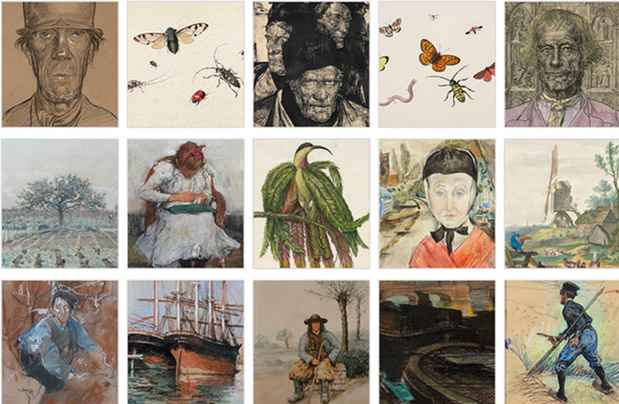“Master Drawings from the 17th through the 21st century” Exhibition
Mireille Mosler Ltd.

This event has ended.
Mireille Mosler Ltd. participates again in Master Drawings New York, a weeklong event at 30 galleries on the Upper East Side. The works on paper exhibited at Mireille Mosler Ltd, spanning more than five centuries, are by a diverse group of artists from different regions and exemplify several stylistic periods.
The earliest drawings exhibited are a group of seventeenth Dutch drawings, depicting small animals and insects. Most of these drawings were commissioned by collectors of cabinets of naturalia, who sometimes even kept small zoos with exotic animals, usually just shown to visitors rather than displayed. Studies of butterflies, birds and flowers by artists as Johannes Bronkhorst (1648-1727), Pieter Holsteyn (1614-1673), Nicolas Struyk (1686-1769) and Pieter Withoos (1655-1693) are in the company of a bird drawn from fantasy on an 18th century French engraving by the contemporary artist Ruth Marten.
Another emphasis is a group of Dutch artists active around the turn of the nineteenth century. Like his contemporary Vincent van Gogh, pastels by Jacobus van Looy (1855-1930) revoke the work of their French predecessors Millet and Delacroix. Five pastels with subjects ranging from A Harbor in Marseille, A Watercarrier in Tangiers to A Mower with a Scythe show the international influences so prominent at the time.
The powerful pastel Godsvertrouwen (Father of the Church) by the Dutchmen Jan Toorop (1858-1928) from 1904 shows us a true testament to the interest and devotion Van Gogh so strongly expressed for simple people from daily life. The economic uncertainty and doom at the outbreak of the First World War inspired Toorop to refer back to Catholicism. In Toorop’s monumental Adoration (Brugge) of 1914, The Holy Family seems to participate in a timeless Stations of the Cross lacing it with mythical and personal symbolism. Leo Gestel, in 1914, depicted bikes packed with parcels of fleeing Belgians parked in front of a café, showing a more pragmatic consequence of the outbrak of war.
Still in the tradition of depicting laberors, Willem van den Berg (1886-1970) chooses his subjects rather locally within the Dutch farmers and fishermen. A larger than life-size drawing, over 55 inches high, portraying moumental fishermen in black chalk, shows an affection for these weathered workers so typical for the beginning of the 1920s. A double-sided pastel of a bird and a lizard show an entire different side of Van den Berg’s oeuvre.
Media
Schedule
from January 24, 2015 to January 31, 2015
Opening Reception on 2015-01-23 from 16:00 to 20:00
Artist(s)
Jules Bastien-Lepage, Willem van den Berg, Zacharias Blijhooft, François Bonvin, Johannes Bronkhorst, Leo Gestel, Hendrik Haverman, Anthony Henstenburgh, Pieter Holsteyn, Gottfried Libalt, Jacobus van Looy, Ruth Marten, Master of the Arundel Sketchbook, Jan Sluyters, Nicolaas Struyk, Willem Bastiaan Tholen, Jan Toorop, Pieter Withoos